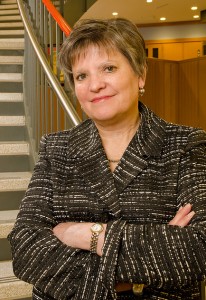 Have you had your eyes examined? I’m sure most of us have experienced the iconic eye chart with the “big E” at the top. It grabs our attention and, hopefully, most of us can see it clearly. This issue of continuum is also about the “big E” – that is, the ubiquitous presence of the prefix “E” to reflect something electronic or digital. We have e-books, e-devices, e-readers, and all of these trends have a profound effect on libraries and library users.
Have you had your eyes examined? I’m sure most of us have experienced the iconic eye chart with the “big E” at the top. It grabs our attention and, hopefully, most of us can see it clearly. This issue of continuum is also about the “big E” – that is, the ubiquitous presence of the prefix “E” to reflect something electronic or digital. We have e-books, e-devices, e-readers, and all of these trends have a profound effect on libraries and library users.
In this issue, you’ll read about several of our current E-initiatives, which are now integrated into our portfolio of collections and services for the University of Minnesota and beyond. These initiatives give a sense of the changing nature of the Libraries’ role in providing content in support of teaching, learning, and research – and also how these mission-critical functions within higher education are changing.
The Libraries have always worked with faculty members to support their teaching and course development. Now, technologies have prompted new models for e-Learning, reflecting radical changes in the nature of courses – everything from totally online courses to hybrid classes in which technology enables problem-based learning in class or allows sharing online lectures outside of the classroom. With these changes, the Libraries are actively engaged in supporting e-Learning initiatives.
The Libraries are helping students save money through our partnership with the College of Education and Human Development in which we are creating and delivering digital “course packs” of content straight to students’ iPads. We’re also reaching outside the University community with MOOCs, or Massive Open Online Courses. MOOCs have been making nationwide news because they allow unlimited, free registration for college-level online instruction. With development support from the Libraries, the University of Minnesota recently launched its first five MOOCs.
The Libraries are also capitalizing on the instant availability of e-books. In an experiment with “on demand” acquisition, we are letting users select e-book titles they can preview in our catalog, and the Libraries then automatically (and seamlessly) purchase the title based on the user’s interest. Not only does this model better tailor content to the needs of faculty and students, it also ensures our ability to respond immediately at the time of need.
Finally, we have big news to share concerning our plans to share digital content with the nation and the world. The Minnesota Digital Library, a project of Minitex (a joint program of the Minnesota Office of Higher Education and the University Libraries), already gives free access to thousands of Minnesota-related images and documents. Now, its reach will expand to the rest of the world, since it was chosen as one of the first regional hubs for the Digital Public Library of America. The DPLA is the first ever online public library for the United States, and we’re excited to be part of it.
The “big E” just keeps getting bigger and our vision for the Libraries’ future a little clearer.
Wendy Pradt Lougee
University Librarian
McKnight Presidential Professor




